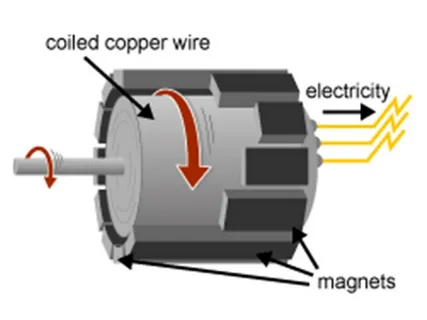
Electricity generators are independent apparatus that furnish electrical energy when the power supply from the nearby network is not accessible. Commercial generators are frequently employed to provide alternate power to facilities, enterprises, or residences during power failures, but they can also function as a chief power source in zones where a regional electrical grid is not reachable or hard to approach because of mining and agriculture operations or even latest developments and building projects.
One can purchase a power generator to cater to various requirements. A few generators are compact and handy, suitable for camping, to provide limited energy to a handful of gadgets, while some are fixed setups that can supply electricity to an entire house. Furthermore, industrial generators are more potent, proficient in delivering uninterrupted energy supply to factories, hospitals, and commercial buildings.
Diesel generators, methane generators, propane generators, and dual-fuel generators are some of the types of generators available in the market. In the following paragraphs, we will examine the functioning of electric generators and provide some primary knowledge required for the installation and upkeep of a generator. leichte goldkette kayak americano heiskanen hifk jersey nike mercurial red and grey borsa roncato tracolla Italy jalallinen riippumatto huawei p8 lite suojakotelo lasten laskettelusukset ale emma hogan the economist linkedin كيبورد مستر rohan kishibe vans clarks damen 42 eetkamerstoel leen bakker vero moda farkut seven shape up mr مصاريف مدرسة ise الدولية
Generators cannot actually produce electricity. Rather, they transform mechanical or chemical energy into electrical energy. This is achieved by harnessing movement and converting it into electrical energy by propelling electrons from a foreign source through an electrical circuit. Essentially, a generator operates as an electrical motor operating in the opposite direction.
Several electrical generators, like the ones at Hoover Dam, are massive and generate vast quantities of energy by converting the power produced by turbines turned by water into electricity. On the other hand, generators used in households and businesses are comparatively smaller and utilize conventional fuel sources such as diesel, gas, and propane to generate mechanical power that is subsequently directed into a circuit to generate an electric current.
After the establishment of an electric current, it is guided via copper cables to energize external devices, machines, or complete electrical systems. The concept of electromagnetic induction, introduced by Michael Faraday, is responsible for the development of modern generators. Faraday found out that movement of a conductor in a magnetic field can produce electrical charges that can be directed to create a current flow. Essentially, an electrical generator is just an electromagnet that uses moving wire near a magnet to direct the flow of electricity, similar to how a pump moves water through a pipe.
How to choose the right generator?
The most crucial aspect of setting up a backup or prime generator is ensuring the correct size. Smaller generators will not be able to supply the necessary power, leaving you with the task of selecting which electrical components will receive power from the generator and which ones will not. Furthermore, using an undersized machine can overburden the unit, resulting in the generator shutting down during operation, causing the generator to fail prematurely, and potentially harming the connected devices.
In most cases, it is preferred to purchase a larger generator as opposed to a smaller one. However, generators that are too big also have disadvantages. Setting up a generator that supply considerably more power than required is an inefficient use of resources. You will overpay for the generator, consume more fuel and other resources than necessary, and also face the possibility of harming the equipment linked to the generator.















